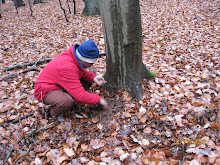PRAGATI SHAHI
KATHMANDU, Nov 25 - Recent government data shows that the rate of deforestation has increased since the end of the decade-long conflict.
According to Department of Forests (DoF), about 100,000 hectares of forest cover was encroached and denuded in the last fiscal year that ended mid-July 2008.
This figure stood at 80,684 hectares in fiscal year 2006/2007, and 79,987 hectares in 2005/2006, the government data stated.
Director General of the Department of Forest (DoF) Krishna Chandra Poudel, said, "Encroachment for illegal settlements in forest land and massive felling of trees for illegal trade are the major reasons behind deforestation at present." The rate of deforestation was high during the decade-long insurgency due to lack of security in the forest sector. "Out of a total of 74 district forest offices, 40 were destroyed and security persons posted in forests were also halved during then," said the DoF director general. But during the current political transition, various groups are involved in encroachment and illegal felling of trees with the patronage of political parties, say officials.
"The components responsible for encroachment, such as land mafia, are more active now than they were during the insurgency," said Uday Raj Sharma, secretary at the Ministry of Forest and Soil Conservation (MoFSC). Official data shows the country's forests are vanishing at the rate of 270 hectares a day, even after restoration of peace in the country.
Political parties had promised free land to the landless during elections earlier this year and now the landless have encroached on forest land, say officials at MoFSC. But on the other hand, lack of human resources and armed officers in various district forest offices of the country are also to blame for the growing the rate of deforestation, according to Sharma.
Data from DoF shows that the rate of deforestation was 2.1 percent per year in the period 1990-2000, which amounts to about 920 square kilometres of forest. Between 2000-2005, the total annual deforestation rate was only 1.4 percent. "This decrease could be because people were afraid to encroach on forest land and fell trees illegally during the insurgency," said Sharma.
According to DoF, the total forest cover in 1990 was 4,817,000 hectares, in 2000 it fell to 3,900,000 hectares and in 2005 the forest cover stood at 3,636,000 hectares.
Rautahat, Kailali, Banke, Nawalparasi, Kanchanpur, Siraha, Bara and Saptari are the hardest hit Tarai districts, according to the Department of Forests.
On November 23, 2008, users of Kanchan Community Forest that covers 180 hectares of land at Saljhandi satellite camp in Rupandehi district accused Maoist combatants of smuggling timber from their community forest. In another incident in May this year, timber smugglers in Siraha district destroyed nearly 1,000 hectares of forest in the Chure range, according to news reports. In the same month, some 2,000 'sal' trees worth Rs. 50 million were indiscriminately felled at different national forests in Rautahat, reports from the district said.
Similarly, a report from Kailali district in 2007 said that 75 percent of forest cover in the district was encroached by land mafia, saying the areas were for bonded labourers and squatters.
Sharma said the government is in the process of formulating a national strategy with the involvement of all political parties and concerned stakeholders to control the alarming rate of forest encroachment in the country. "The framework will be formed next month and it will help solve problems related to forests in every district," he said.
Wednesday, 26 November 2008
Forests shrinking, says DoF
Subscribe to:
Post Comments (Atom)


No comments:
Post a Comment